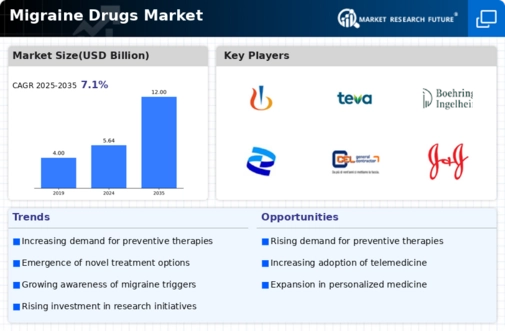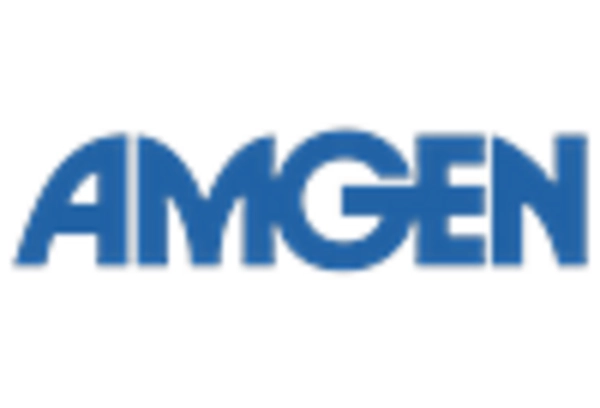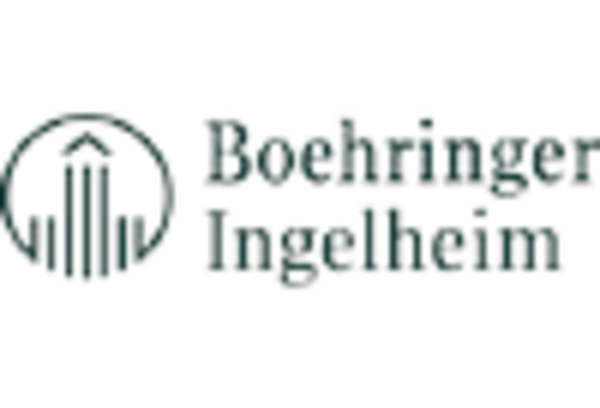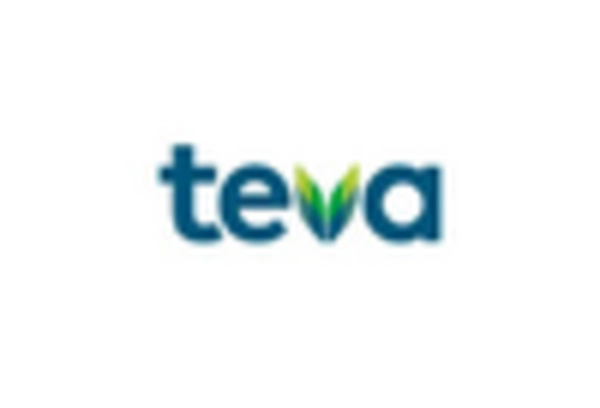The Migraine Drugs Market is characterized by a dynamic competitive landscape, driven by increasing prevalence rates and a growing demand for effective treatment options. Key players such as Amgen (US), Eli Lilly (US), and AbbVie (US) are strategically positioned to leverage innovation and expand their market presence. Amgen (US) focuses on developing novel therapies, while Eli Lilly (US) emphasizes partnerships to enhance its product portfolio. AbbVie (US) is actively pursuing mergers and acquisitions to bolster its research capabilities, collectively shaping a competitive environment that prioritizes advanced treatment solutions.
In terms of business tactics, companies are increasingly localizing manufacturing and optimizing supply chains to enhance efficiency and responsiveness to market demands. The competitive structure of the Migraine Drugs Market appears moderately fragmented, with several key players exerting significant influence. This fragmentation allows for diverse treatment options, yet the collective strategies of major companies are likely to drive consolidation and innovation in the sector.
In November 2025, Eli Lilly (US) announced a strategic partnership with a leading telehealth provider to integrate digital health solutions into its migraine treatment offerings. This move is significant as it aligns with the growing trend of digitalization in healthcare, potentially enhancing patient engagement and adherence to treatment protocols. By leveraging telehealth, Eli Lilly (US) aims to provide more accessible care, which could lead to improved patient outcomes and increased market share.
In October 2025, AbbVie (US) completed the acquisition of a biotech firm specializing in migraine therapies, a strategic action that underscores its commitment to expanding its product pipeline. This acquisition is likely to enhance AbbVie’s research capabilities and accelerate the development of innovative treatments, positioning the company favorably in a competitive market that increasingly values cutting-edge solutions.
In September 2025, Amgen (US) launched a new migraine drug that utilizes a unique mechanism of action, which could potentially differentiate it from existing therapies. This launch is indicative of Amgen's focus on innovation and its intent to capture a larger share of the market by addressing unmet medical needs. The introduction of such novel therapies may shift the competitive dynamics, as companies strive to offer differentiated products that resonate with healthcare providers and patients alike.
As of December 2025, current competitive trends in the Migraine Drugs Market are increasingly defined by digitalization, sustainability, and the integration of artificial intelligence (AI) in drug development. Strategic alliances are becoming more prevalent, enabling companies to pool resources and expertise to accelerate innovation. The competitive differentiation is likely to evolve from traditional price-based competition towards a focus on technological advancements, innovative treatment modalities, and reliable supply chains. This shift suggests that companies that prioritize research and development, alongside strategic partnerships, will be better positioned to thrive in an increasingly complex market.

















Leave a Comment